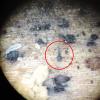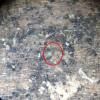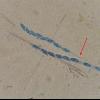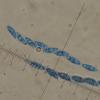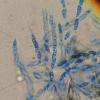
09-01-2026 10:08
 Blasco Rafael
Blasco Rafael
Hola, en el mismo habitat que la anteriorRetamaDia

08-01-2026 21:22
 Blasco Rafael
Blasco Rafael
Hola, He recogido esta muestra de Orbilia sobre Re

07-01-2026 10:24
 Danny Newman
Danny Newman
Pezicula sp. on indet. hardwood Appalachian Highl

07-01-2026 22:22
 Danny Newman
Danny Newman
Tatraea sp. on indet. hardwood The Swag, Great Sm

07-01-2026 17:29
 Marc Detollenaere
Marc Detollenaere
Dear Forum,On a barkless Populus I found some smal

10-11-2021 17:33
 Riet van Oosten
Riet van Oosten
Add-on topic http://www.ascofrance.com/forum/7059

07-01-2026 10:05
 Danny Newman
Danny Newman
cf. Chaetospermum on XylariaCosby Campground, Grea

02-01-2026 17:43
MARICEL PATINOHi there, although I couldn't see the fruitbody, I

04-01-2026 17:45
 Stephen Martin Mifsud
Stephen Martin Mifsud
I was happy to find these orange asmocyetes which
Periphyses septate, diameter 7 mu, apical part 4 mu.
The pycnidia (0.25-0.5 mm) with necks up to 0,7 mm, half to largely immersed in the substratum. Top of neck with light-coloured drops consisting of spores.
My first idea was: Lentomitella, i.e. L. crinigera but this species has a short stipe and ellipsoid striated spores with rounded ends (no stipes shown in drawings and photos of Reblova 2006). Ceratosphaeria is another long-necked pyrenomycete, but these species have even longer spores and/or more septa. Another option would be Rhodoveronaea varioseptata, of which the teleomorph was described by Reblova in 2009. Some characters fit well (spore form, spore wall, thin stipe), but this possibility was rejected because the spores are too small compared with the epitype: 14-16.5 x 6-6.5 mu (the other, Swedish specimen examined by Reblova has even larger spores). Also the necks are at variance with Reblova's description: not tapering to the top and much longer.
What else could it be? All suggestions will be much appreciated.

